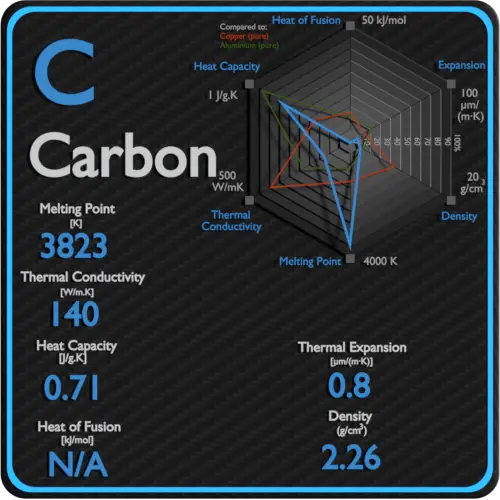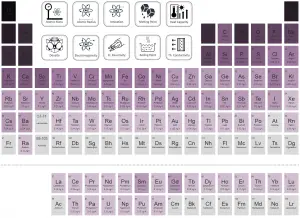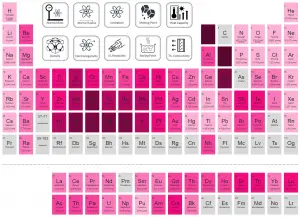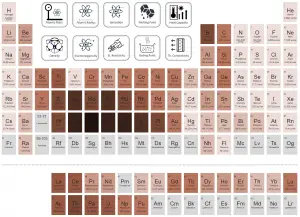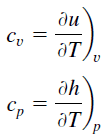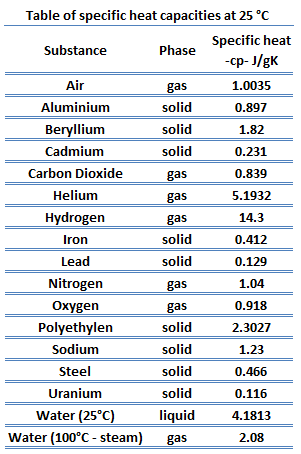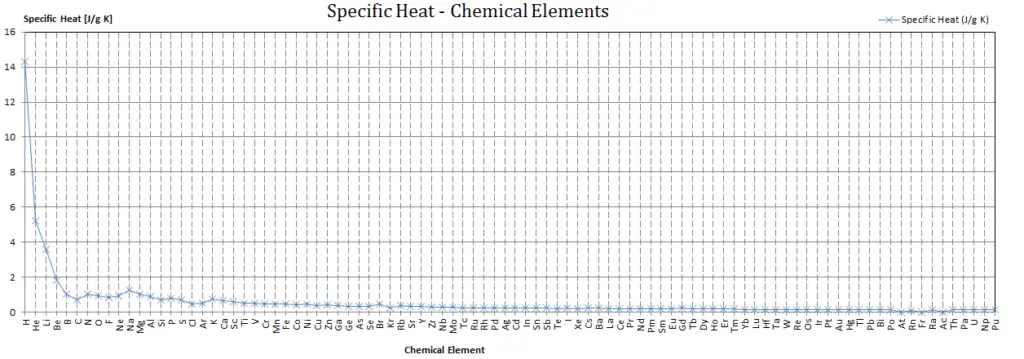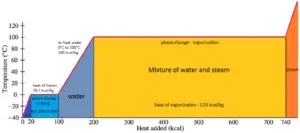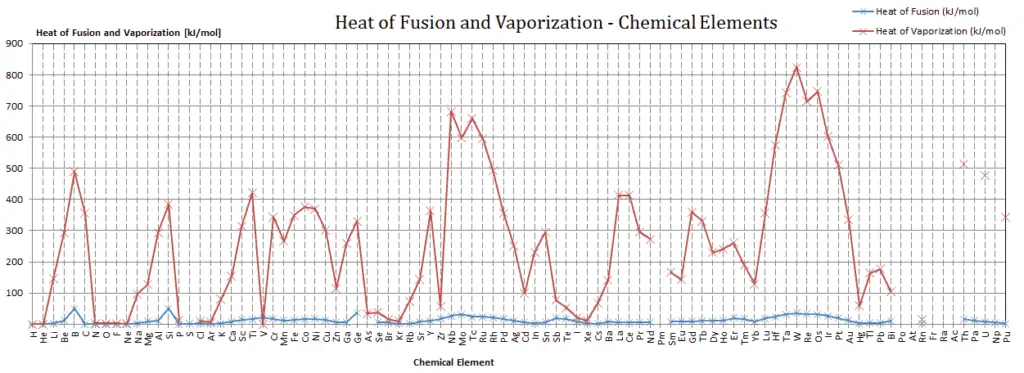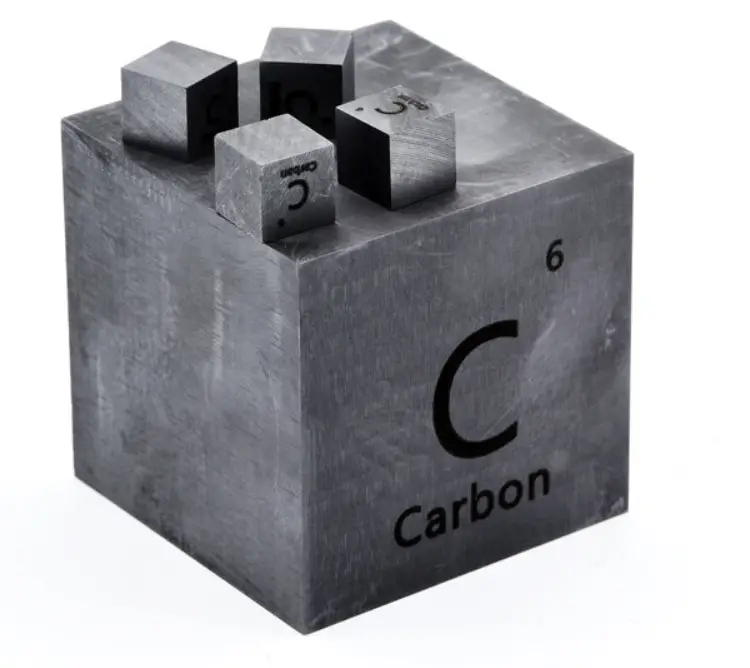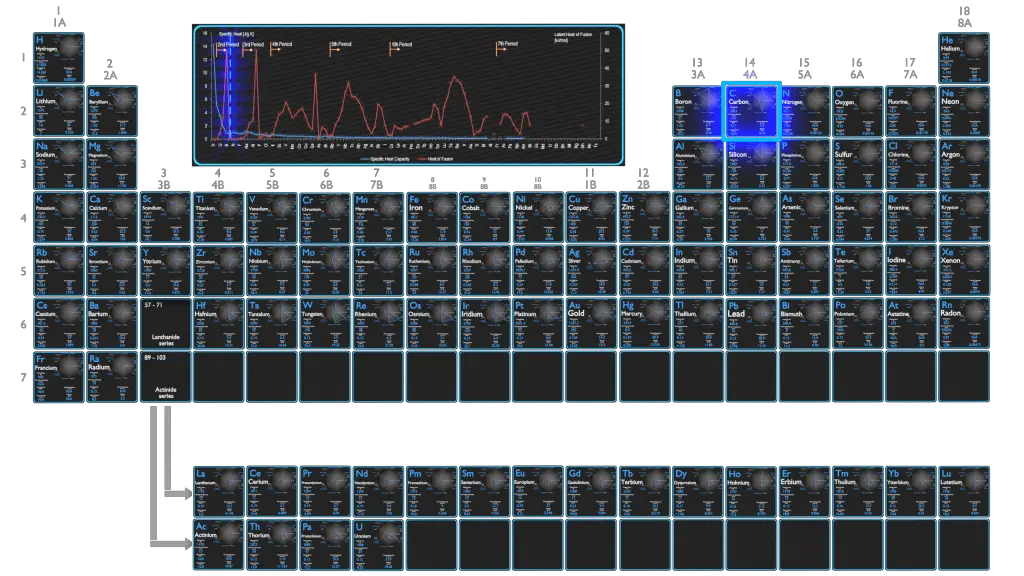About Carbon
It is nonmetallic and tetravalent—making four electrons available to form covalent chemical bonds. Carbon is one of the few elements known since antiquity. Carbon is the 15th most abundant element in the Earth’s crust, and the fourth most abundant element in the universe by mass after hydrogen, helium, and oxygen.
Carbon – Specific Heat, Latent Heat of Fusion, Latent Heat of Vaporization
Specific heat of Carbon is 0.71 J/g K.
Heat capacity is an extensive property of matter, meaning it is proportional to the size of the system. Heat capacity C has the unit of energy per degree or energy per kelvin. When expressing the same phenomenon as an intensive property, the heat capacity is divided by the amount of substance, mass, or volume, thus the quantity is independent of the size or extent of the sample.
Latent Heat of Fusion of Carbon is — kJ/mol.
Latent Heat of Vaporization of Carbon is 355.8 kJ/mol.
Latent heat is the amount of heat added to or removed from a substance to produce a change in phase. This energy breaks down the intermolecular attractive forces, and also must provide the energy necessary to expand the gas (the pΔV work). When latent heat is added, no temperature change occurs. The enthalpy of vaporization is a function of the pressure at which that transformation takes place.
See also: Mechanical Properties of Carbon
Summary
| Element | Carbon |
| Specific Heat | 0.71 J/g K |
| Heat of Fusion | — kJ/mol |
| Heat of Vaporization | 355.8 kJ/mol |
| Density | 2.26 g/cm3 |
Source: www.luciteria.com
